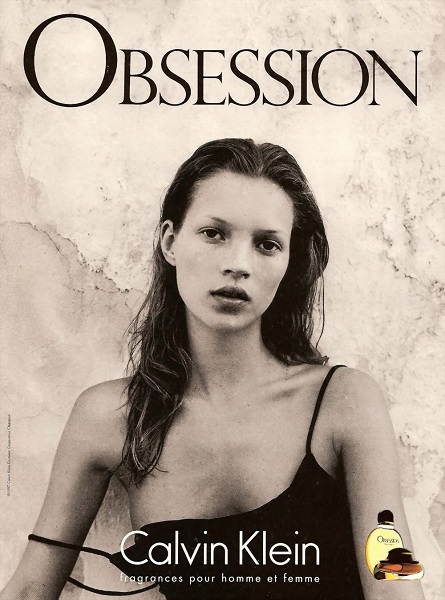I hit puberty during the Kate Moss, Fiona Apple, grunge era of the 90s.
Unfortunately for me and my ass, J.Lo had not become a household name. Obnoxiously thin, sickly, waif-like bodies were in and according to high-fashion magazines, having thick thighs and a bigger backside were signs of being overweight.
We’ve all been through the uncomfortable transformation of puberty. We all have defining moments that shook us, changed us, and made us feel less than worthy in our own bodies.
My transformation into awkwardness began at 13. I was painfully aware of my body and its flaws. I still remember the potent smell of chlorine and the blue bikini with pink palm trees and surfboards I was wearing. I remember all eyes on me as I pulled myself out of the hot tub and grabbed the too-small, thin hotel towel and wrapped it tightly around me.
And I remember the boy—the boy and all his friends, who were a few years older than me. The boy who said, “You know, you’d be super hot if you didn’t have such a big butt.”
They all laughed. I laughed, too, because I didn’t know how to stand up for myself. And I definitely didn’t know how to stand up for my body. I was brought up believing this was how men acted. This was my problem, not theirs.
And the message was clear: boys didn’t need to change. Girls just needed thicker skin and smaller butts.
Two years later, at age 15, I would walk through the doors of my first eating disorder treatment center.
At 26, I would step foot in another treatment center. This time, the stakes were higher. It wasn’t about me and my relationship to my body anymore. My daughter, Presley, was a month shy of her second birthday.
I remember looking at the doctor reviewing my chart, stumbling over my words, and asking, ”Do I really need to be here? I mean, do you think I need to be here? I mean, I really think I can do this on my own.”
I remember desperately fidgeting, crossing and uncrossing my legs, and catching myself in my own suppressed denial. I remember the doctor lowering his glasses, squeezing his eyebrows together, and taking another look at my chart.
Leaning into me, he wrapped both of my ice cold hands in his warmth, looked me in the eyes, steadied his gaze, and said, “Rachel, you’re lucky to be alive and I think you are right where you’re supposed to be.”
I let out a breath and gave him a half-quivering smile. In the midst of the unusual silence, under the artificial light, in that cold, impersonal hospital room, I wasn’t sure if I wanted to weep or punch the f*cking wall.
And so I wept.
I wept long and hard until my mascara was everywhere but my eyelashes. I wept for women everywhere, because I know that although our struggles with body image may differ, we all struggle on some level.
We all have innocent and not so innocent comments that have never left us. We have all felt devalued, degraded, objectified, or unworthy at some point in our lives. We may have been 13 or 30, but we’ve all been there.
But I feel like we’re starting to experience a cultural shift because of our collective voices and bravery. I’m proud of us. I’m thrilled we are uniting, taking back our power, proclaiming our bodies are not wrong, and insisting they belong to us. We are doing it. We’re finally realizing there are many ways to impact and hurt another person—and just as many ways to heal.
We are creating awareness and change. When we were growing up, our culture told us there was something wrong with the way we looked, and the only way to outsmart our breasts, backsides, and DNA was to defy our own bodies. But these days, I’m noticing more and more of us are mad at the messages we’re being fed by the media and no longer mad at and disconnected from our bodies.
Righteous anger can be a beautiful thing.
I don’t blame that boy for his comment about my ass. He was simply speaking what his mind had been conditioned to believe about women and their worth. We have been trained on every level to compartmentalize women’s bodies into pieces and whether we believe it or not, it affects all of us.
Our collective issues surrounding weight, food, and body image all stem from this conditioning. My ultimate fantasy would be to have every executive in the marketing world read these words and make choices that stop this insanity.
Even though I know that will probably never happen, here are three steps we can take to change the way we view women’s bodies:
1. Pay attention to ads.
One look at the magazine section in our local grocery store checkout line confirms this. Women’s bodies are used to sell just about everything—even hamburgers—often in hyper-sexualized ways. We can’t fall for it, peeps. It’s a trap and the bikini-clad, blonde supermodel won’t be hanging out the drive-through window to hand you your processed, factory-farmed burger.
The culture we live in has already jammed an unrealistic standard of beauty down our throats as women. We are being force-fed insanity, daily. We’re told both directly and indirectly to stay young, quiet, and beautiful. Notice how many age-defying products are marketed to women versus men. Enormous profits are created by large corporations playing to our weaknesses and pushing us to maintain an unrealistic standard of beauty.
Start paying attention to ads in magazines, on TV, or on billboards. More often than not, a young, thin, scantily-clad female is used. If a man is in the ad with her, the woman is often in a submissive pose. Men are mostly upright and alert while women are usually lying down, confused, or even looking to a man for support.
2. See women as whole beings.
Dismemberment (where only a part of a woman’s body is shown in media or ads) is a widespread problem that doesn’t get the attention it deserves. In my personal opinion, it’s one of the most harmful practices because it subconsciously tells us that if a certain body part is less than perfect, we are inherently wrong as a whole. Compartmentalizing a woman’s body impacts how both men and women view the female form and causes objectification on both sides.
A while back, I learned about the objectification theory. This is the idea that our culture socializes girls and women to internalize an observer’s perspective on their own bodies, and in turn, we often view ourselves in the third-person, focusing on the details of our body instead of our feelings, thoughts, and emotions. This self-objectification leads to mental health issues, eating disorders, and struggles with sexual intimacy.
Yes ladies, we’ve unintentionally been objectifying ourselves.
3. Change your narrative.
While women have made significant strides in terms of equal rights, we still have a long way to go. The widespread sexualization of women and girls didn’t get this way overnight. Advertisers, marketers, and consumers have slowly but steadily moved the line back in terms of what we accept. The bottom line: we’ve normalized this behavior. And we can change it. Each decision we make can bring us closer to being seen as the whole, inquisitive, nurturing people we truly are—and not as some helpless 13-year-old who would be super hot if her ass weren’t so big.
We can reclaim our bodies and our body image by being aware and refusing to play the body shame game.
My hope is that we, as women, will begin to see our bodies as a source of creation. That we will recognize that we are intuitive, nurturing beings connected to great wisdom—a wisdom that starts within.
Believe it. Know it. Because it’s true.
I’m a feminist, I’ve been a female for a long time now, it’d be stupid not to be on my own side. ~Maya Angelou
~
Author: Rachel Dehler
Image: vintage ad
Apprentice Editor: Shelley Karpaty
Editor: Nicole Cameron
Copy Editor: Callie Rushton
Social Editor: Lindsey Block









Read 5 comments and reply